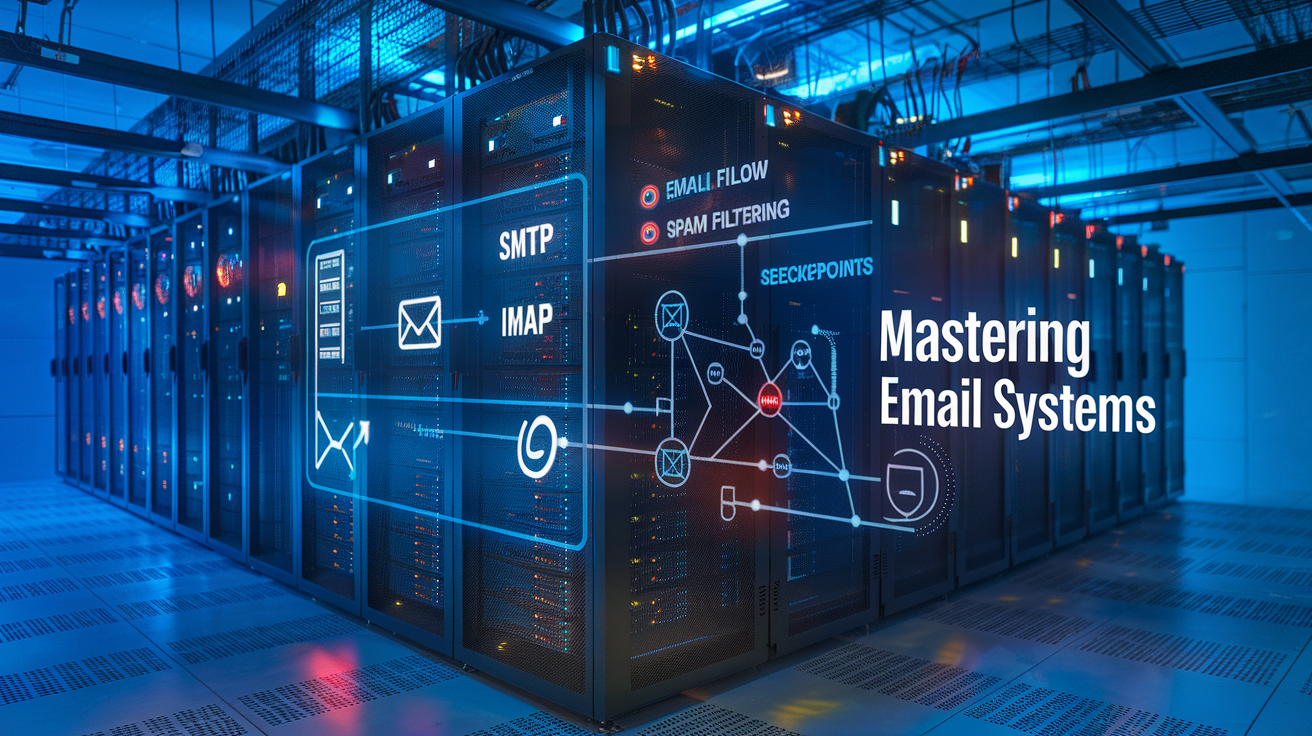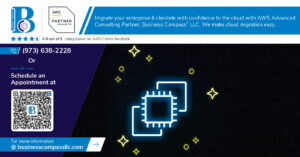Ever tried explaining to your CEO why 30% of your company emails are landing in spam folders? Not fun. Trust me.
Email systems might seem like boring infrastructure, but they’re actually the invisible backbone of your entire digital communication strategy. When they break, everyone notices.
In this guide, we’ll demystify email systems including SMTP, IMAP protocols, and effective spam filtering techniques that actually work in 2023. You’ll learn practical setups whether you’re handling 100 emails daily or scaling to millions.
But before we dive into server configurations and authentication protocols, there’s something critical most IT managers completely overlook when designing their email architecture…
Understanding SMTP: The Email Delivery Protocol
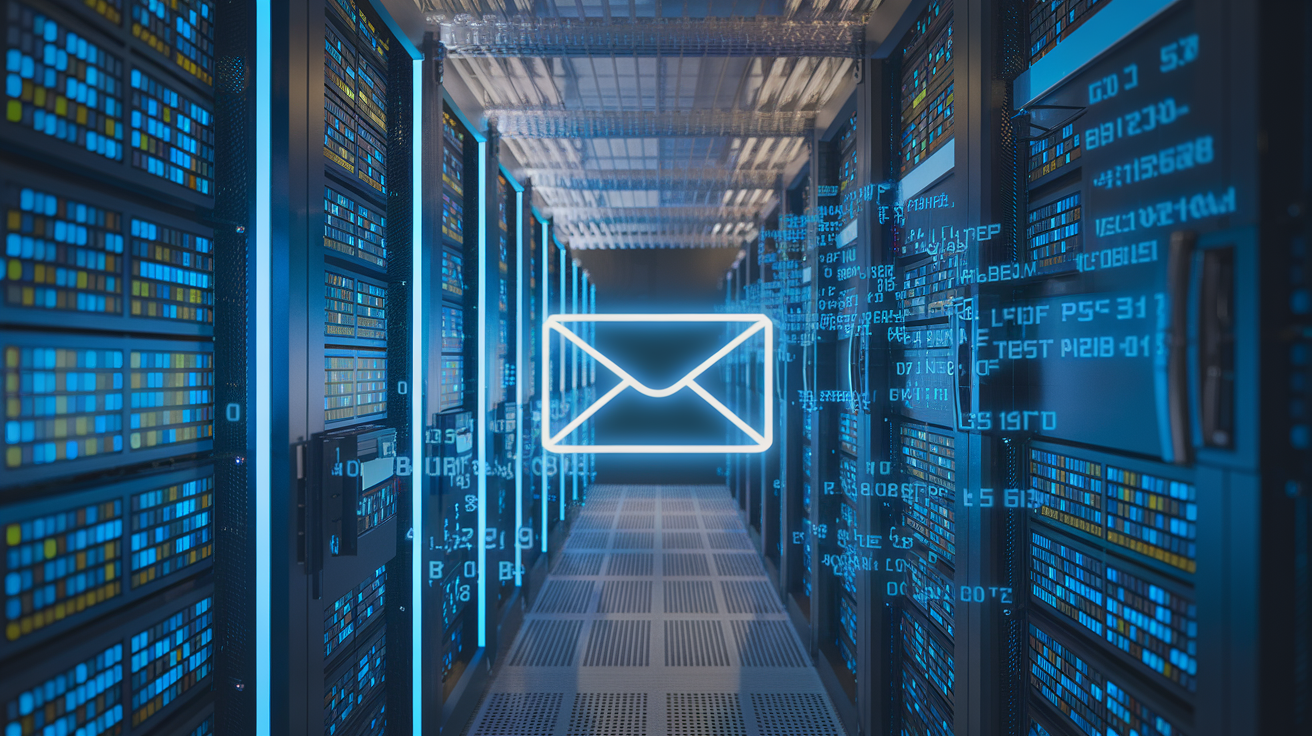
How SMTP Works to Transmit Your Messages
Ever sent an email and wondered how it magically reaches the recipient’s inbox? That’s SMTP in action. SMTP (Simple Mail Transfer Protocol) works like a digital postal service for your emails.
When you hit “send,” your email client connects to an SMTP server and says “Hey, I’ve got mail to deliver!” Your message gets broken down into chunks, each labeled with sender and recipient info. The SMTP server then plays hot potato with your email, passing it from server to server until it reaches its destination.
Think of SMTP as a relay race where each runner (server) passes the baton (your email) to the next runner until it crosses the finish line (your recipient’s inbox).
Key Components of SMTP Servers
SMTP servers have a few essential parts that make the magic happen:
- MTA (Mail Transfer Agent): The workhorse that routes emails between servers
- Mail queues: Where emails wait their turn to be processed
- DNS resolver: Finds the recipient’s mail server address
- Relay engines: Handle the actual transmission of messages
The beauty of an SMTP server setup is its simplicity. It doesn’t care if you’re sending a one-line message or a massive report with attachments – it just follows protocol and delivers.
Authentication Methods That Protect Your Email
Nobody likes email imposters. That’s why modern SMTP uses these authentication methods:
- SPF: Verifies the sender’s domain is authorized to send email
- DKIM: Adds a digital signature to verify the message wasn’t tampered with
- DMARC: Combines SPF and DKIM to create a robust security framework
- SMTP AUTH: Requires username/password before allowing mail to be sent
These methods are critical for email security best practices and protect against the most common email threats.
Common SMTP Error Codes and Troubleshooting
SMTP errors got you down? Here’s what those cryptic numbers mean:
| Error Code | What It Means | Quick Fix |
|---|---|---|
| 421 | Service not available | Try again later |
| 450 | Mailbox busy | Wait and retry |
| 550 | User unknown | Check the email address |
| 553 | Invalid mailbox | Verify recipient exists |
Troubleshooting SMTP errors isn’t rocket science. Most issues boil down to connection problems, authentication failures, or invalid addresses. When in doubt, check your server logs – they’ll tell you exactly where things went wrong.
IMAP and POP3: Email Retrieval Mechanisms
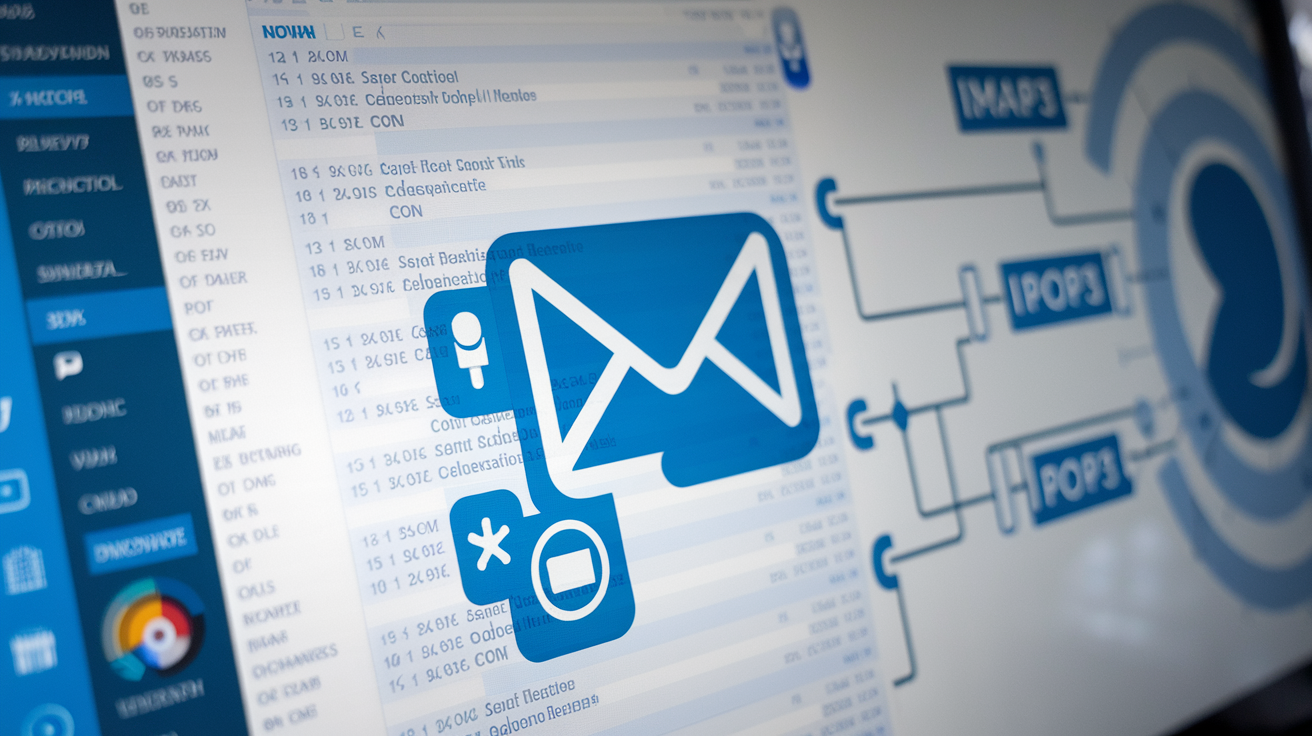
IMAP vs. POP3: Choosing the right protocol for your needs
Ever gotten confused about which email protocol to use? You’re not alone. The battle between IMAP and POP3 boils down to how you want to access your emails.
POP3 is like picking up your mail from the post office – it downloads everything to your device and (typically) removes it from the server. Great for single-device users who want offline access, but a nightmare if you check emails on multiple devices.
IMAP, on the other hand, keeps everything in sync. Read an email on your phone? It’ll show as read on your laptop too. Perfect for our multi-device world.
| Feature | IMAP | POP3 |
|---|---|---|
| Server storage | Emails stay on server | Emails typically removed after download |
| Multi-device | Perfect synchronization | Poor experience |
| Offline access | Limited without setup | Complete |
| Server space | Requires more | Minimal |
| Bandwidth usage | Lower | Higher |
Setting up IMAP for seamless multi-device access
Setting up IMAP isn’t rocket science. Most email clients detect settings automatically, but here’s the manual approach:
- Find your provider’s IMAP settings (usually in their help docs)
- Enter the IMAP server address (typically imap.provider.com)
- Use port 993 for SSL/TLS connections
- Input your email credentials
- Configure sync settings (which folders to sync, how often)
Pro tip: Only sync essential folders on mobile devices to save battery and data.
Security considerations for email retrieval
Email security isn’t optional these days. When setting up IMAP or POP3:
- Always use encrypted connections (SSL/TLS)
- Avoid public Wi-Fi for email setup
- Enable two-factor authentication
- Use strong, unique passwords
- Regularly audit connected devices
Remember those old-school unencrypted connections on ports 143 (IMAP) and 110 (POP3)? Avoid them like the plague. They’re basically broadcasting your emails to anyone who’s listening.
For enterprise setups, consider implementing certificate pinning and VPN requirements for remote access to further lock down your email retrieval.
Effective Spam Filtering Techniques
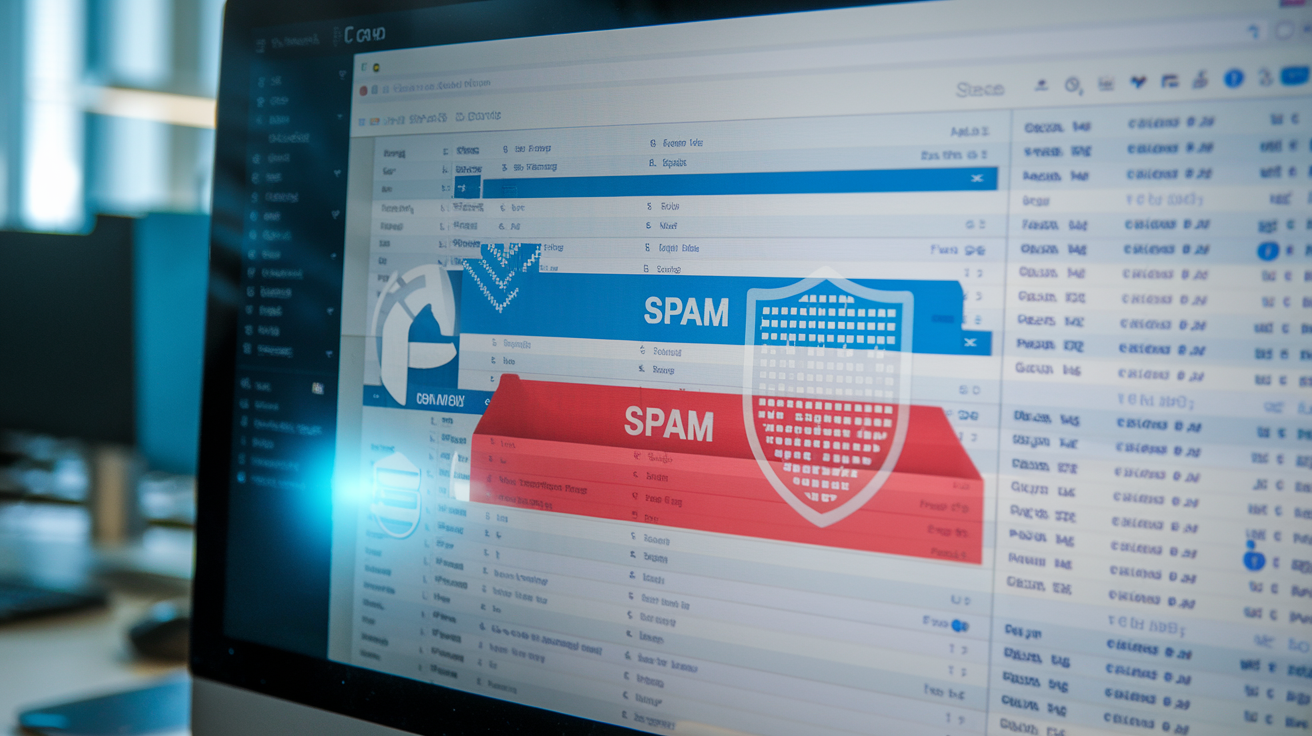
How modern spam filters identify unwanted messages
Spam filters have gotten ridiculously smart. They’re no longer just looking for the word “V1AGRA” spelled with numbers. Today’s filters analyze dozens of signals simultaneously:
- Message content and structure
- Sending patterns and volume
- IP reputation scores
- User behavior and feedback
- Header analysis and authentication
The magic happens when these systems build complex profiles of what “normal” email looks like. Anything that deviates too far gets flagged. Your email server setup needs proper spam filter configuration to balance security with deliverability.
Bayesian filtering and machine learning approaches
Remember when you had to manually mark stuff as spam? Those days are gone.
Bayesian filtering was the OG approach – calculating statistical probabilities based on words appearing in spam versus legitimate emails. But modern systems use far more sophisticated machine learning:
- Neural networks that understand context
- Clustering algorithms that spot patterns
- Automated rule generation that adapts to new threats
These systems get smarter with every email they process. They’re constantly retraining themselves to catch the latest tricks spammers dream up.
SPF, DKIM, and DMARC: Authentication frameworks
Email authentication is your first line of defense against phishing. Here’s the simple breakdown:
| Framework | What it does |
|---|---|
| SPF | Verifies sender’s IP is authorized to send from that domain |
| DKIM | Adds digital signature to verify email hasn’t been tampered with |
| DMARC | Tells receiving servers what to do with emails that fail SPF/DKIM |
Implementing these three together creates a powerful shield against domain spoofing. They’re critical components of robust email security best practices.
Setting up effective spam rules for your organization
Custom spam rules can dramatically improve filtering accuracy for your specific needs:
- Start with reasonable thresholds – too strict and you’ll block legitimate mail
- Create whitelists for trusted partners
- Implement sender reputation scoring
- Configure content-specific filters for your industry
- Set up quarantine policies instead of immediate deletion
The trick is finding the right balance for your organization. Too permissive, and you’re swimming in spam. Too restrictive, and important messages get blocked.
False positive prevention strategies
Nothing frustrates users more than missing important emails. Try these approaches:
- Implement two-stage filtering with a quarantine review process
- Train users to check spam folders regularly
- Create custom rules for frequent false positives
- Use address book integration to prioritize known contacts
- Set up notification systems for quarantined messages
Regular audits of your spam trap will reveal patterns in false positives. When troubleshooting SMTP errors related to delivery issues, always check if overzealous filtering is the culprit.
Email Server Architecture

Components of a robust email server
Ever tried building a sandcastle without wet sand? That’s what setting up an email server without the right components feels like – it just falls apart.
A solid email server architecture needs these core elements:
-
MTA (Mail Transfer Agent): This is your mail courier. Postfix and Sendmail are popular options that handle SMTP traffic and make sure emails get where they need to go.
-
MDA (Mail Delivery Agent): Think of this as your internal mail sorter, moving messages to the right mailboxes.
-
MRA (Mail Retrieval Agent): The system that lets users access their emails through IMAP or POP3 protocols. Dovecot is a favorite here.
-
Storage system: Where all those emails actually live. You need efficient database structures that can handle search queries without crawling.
-
Authentication framework: Because you don’t want just anybody sending from your domain. DKIM, SPF, and DMARC are must-haves.
-
Spam and malware filters: SpamAssassin and ClamAV keep the bad stuff out without trapping legitimate messages.
-
Backup systems: Because losing everyone’s email is a career-limiting move.
The magic isn’t just having these pieces – it’s how they work together. Performance monitoring, redundancy, and clear logging turn these components into a system that doesn’t keep you up at night.
Open-source vs. commercial email solutions
The age-old debate: build or buy?
Open-source solutions give you freedom but demand expertise. Commercial options cost more but offer convenience. Here’s the real breakdown:
| Feature | Open-source | Commercial |
|---|---|---|
| Cost | Free (but engineering time isn’t) | Subscription/licensing fees |
| Control | Complete customization | Limited to vendor features |
| Support | Community forums, DIY | Vendor SLAs, dedicated support |
| Security | Community-patched, transparent | Vendor-managed, sometimes opaque |
| Learning curve | Steep, requires technical staff | Generally easier admin interfaces |
Popular open-source options like Postfix+Dovecot combinations give you total control. You can optimize exactly how you want. But when something breaks at 2 AM, it’s on you.
Commercial solutions like Microsoft Exchange or Mimecast come with expert teams and guarantees. You’re paying for peace of mind and letting someone else handle the technical debt.
The truth? Many organizations run hybrid setups – open-source core with commercial add-ons for specific needs like advanced security or compliance features.
Cloud-based email services compared
Cloud email has changed everything. You’re essentially outsourcing the entire architecture headache to providers with massive scale.
The big players offer different strengths:
| Service | Best for | Limitations |
|---|---|---|
| Google Workspace | Collaboration, integration with Google tools | Less control, privacy concerns |
| Microsoft 365 | Enterprise integration, Windows environments | Complex admin, licensing costs |
| Zoho Mail | Small business, budget-conscious orgs | Fewer enterprise features |
| AWS WorkMail | Organizations already in AWS ecosystem | Less intuitive than competitors |
| ProtonMail | Privacy-focused organizations | Limited integration with other systems |
The decision points? Scale, security requirements, compliance needs, and existing ecosystem. Cloud services handle the infrastructure scaling problems, but you’ll sacrifice some control over how things work.
Many organizations migrate to cloud services when they realize their expertise is better spent on their core business rather than maintaining email infrastructure. But specialized industries with unique compliance needs often keep some on-premises components.
Scaling Email Systems for Growing Organizations

Horizontal vs. Vertical Scaling Strategies
Growing pains with your email system? You’ve got two paths forward: go up or go wide.
Vertical scaling (going up) means beefing up your existing servers with more CPU, RAM, and storage. It’s quick and simple—just throw better hardware at the problem. But there’s a ceiling to how powerful one machine can get, and you’ll face downtime during upgrades.
Horizontal scaling (going wide) adds more servers to your email infrastructure. This approach shines for enterprise email solutions because:
- You can add capacity without downtime
- There’s virtually no upper limit to growth
- It offers built-in redundancy when one server fails
Most successful email server architectures start vertical and then transition to horizontal as load increases. The trick is knowing when to make the jump.
Load Balancing Techniques for High-Volume Email
When your SMTP servers are gasping for air, load balancers become your best friends. They distribute incoming email traffic across multiple servers, preventing any single point of failure.
Round-robin distribution works for basic setups, but sophisticated balancers make decisions based on:
- Current server load
- Connection counts
- Geographic proximity
- Server health checks
For SMTP traffic specifically, use connection-based persistence rather than session-based. This ensures all related email transactions stay on the same server.
Hardware load balancers offer raw performance, but software solutions like HAProxy and NGINX provide flexibility and cost savings without sacrificing much speed.
Database Optimization for Message Storage
Email databases can balloon faster than you’d expect. Smart optimization keeps things running smoothly.
Table partitioning is a game-changer—split message stores by date ranges to keep queries zippy even as you scale to millions of messages. Indexes on sender, recipient, date, and subject fields pay massive performance dividends.
Consider these storage approaches:
| Storage Type | Best For | Limitations |
|---|---|---|
| Traditional RDBMS | Structured queries | Higher resource needs |
| NoSQL | Massive scale | Complex querying |
| Hybrid | Most enterprise setups | Implementation complexity |
Regular purging of trash and spam folders (with clear user policies) prevents wasteful storage bloat.
Monitoring and Performance Metrics
You can’t fix what you don’t measure. For email systems, these are your critical numbers:
- Delivery time (submission to delivery)
- Queue size and processing rates
- Server resource utilization (CPU, memory, disk I/O)
- Bounce rates and delivery success
- Authentication failures
Set alerts for queue backlogs—they’re often the first sign of trouble. Track hourly, daily, and weekly patterns to establish baselines and spot anomalies before users complain.
SMTP error codes provide valuable troubleshooting insights, so capture and analyze them systematically. Log parsing tools like ELK Stack or Graylog transform raw data into actionable intelligence.
The difference between amateur and professional email system management? Proactive monitoring versus reactive firefighting.
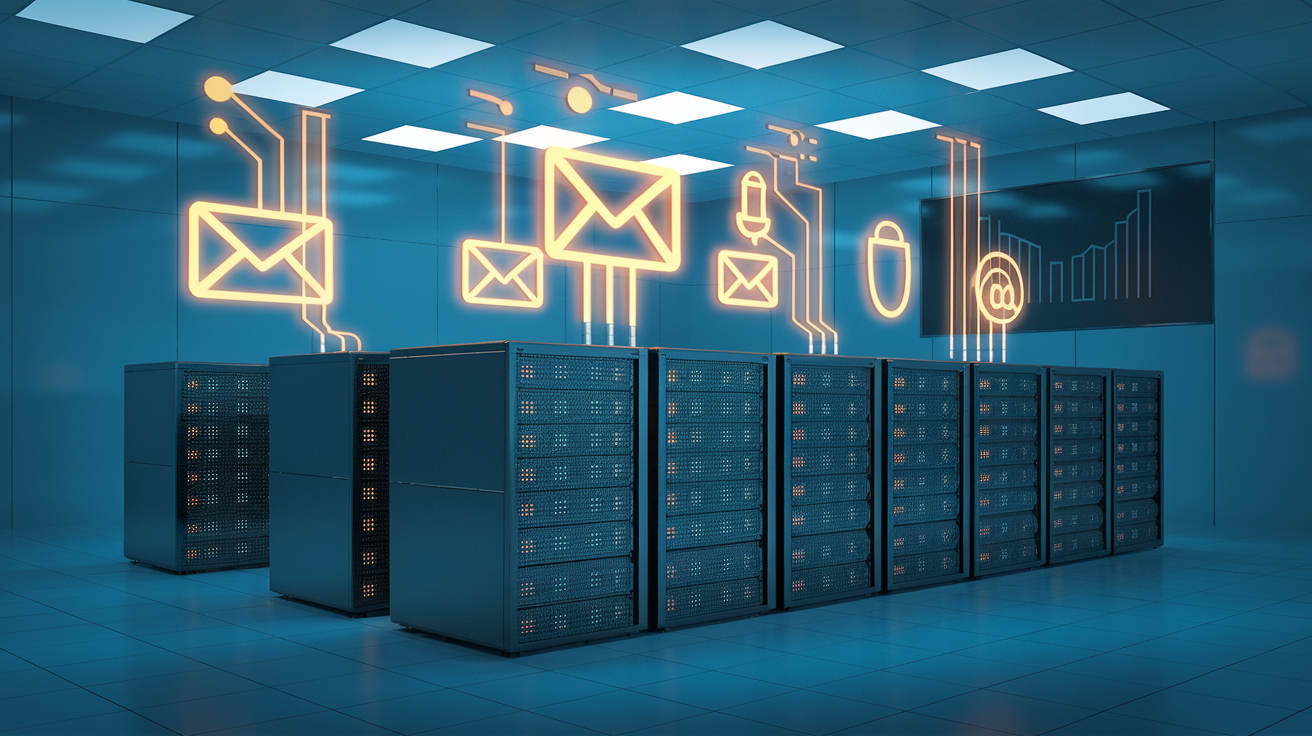
The Journey to Email Mastery
Email systems are complex yet essential digital infrastructure that organizations rely on daily. From SMTP’s critical role in message delivery to the retrieval capabilities of IMAP and POP3, understanding these protocols provides the foundation for reliable email communication. Combined with robust spam filtering techniques and thoughtfully designed server architecture, these elements form a comprehensive email ecosystem that supports both small operations and enterprise-level communications.
As your organization grows, implementing scalable email systems becomes increasingly important. Taking time to properly architect your email infrastructure with appropriate redundancy, load balancing, and monitoring will save countless hours of troubleshooting and downtime in the future. Whether you’re managing emails for a small team or a global enterprise, the principles outlined in this guide provide the knowledge needed to make informed decisions about your email systems and ensure smooth, secure communication for years to come.










